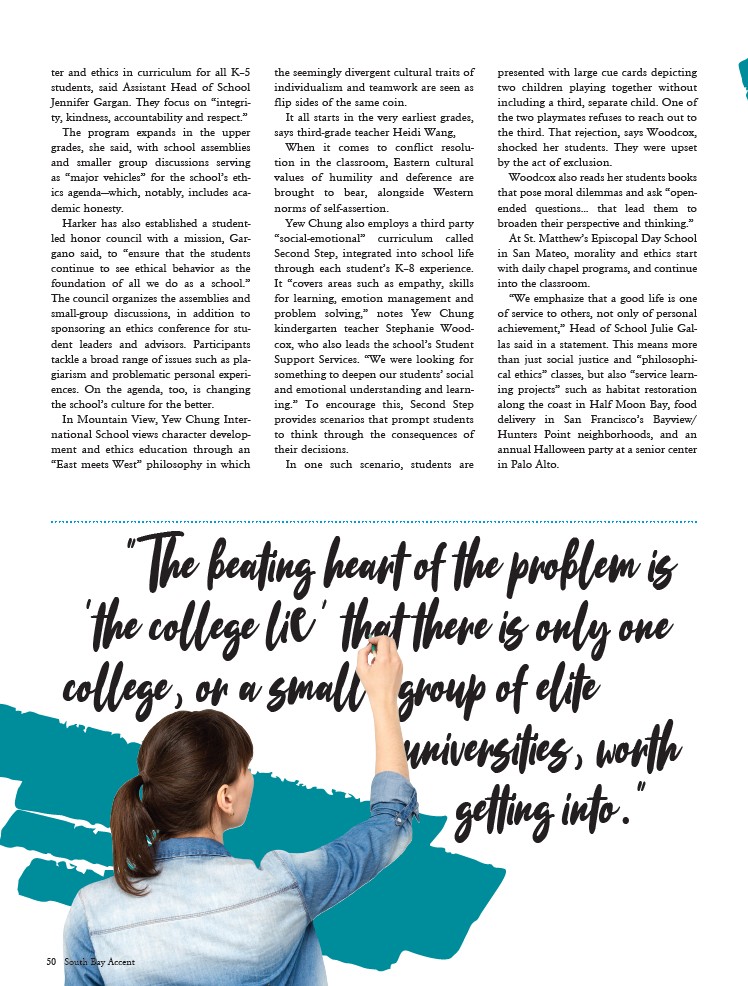
ter and ethics in curriculum for all K–5
students, said Assistant Head of School
Jennifer Gargan. They focus on “integrity,
kindness, accountability and respect.”
The program expands in the upper
grades, she said, with school assemblies
and smaller group discussions serving
as “major vehicles” for the school’s ethics
agenda—which, notably, includes academic
honesty.
Harker has also established a studentled
honor council with a mission, Gargano
said, to “ensure that the students
continue to see ethical behavior as the
foundation of all we do as a school.”
The council organizes the assemblies and
small-group discussions, in addition to
sponsoring an ethics conference for student
leaders and advisors. Participants
tackle a broad range of issues such as plagiarism
and problematic personal experiences.
On the agenda, too, is changing
the school’s culture for the better.
In Mountain View, Yew Chung International
School views character development
and ethics education through an
“East meets West” philosophy in which
the seemingly divergent cultural traits of
individualism and teamwork are seen as
flip sides of the same coin.
It all starts in the very earliest grades,
says third-grade teacher Heidi Wang,
When it comes to conflict resolu-
tion in the classroom, Eastern cultural
values of humility and deference are
brought to bear, alongside Western
norms of self-assertion.
Yew Chung also employs a third party
“social-emotional” curriculum called
Second Step, integrated into school life
through each student’s K–8 experience.
It “covers areas such as empathy, skills
for learning, emotion management and
problem solving,” notes Yew Chung
kindergarten teacher Stephanie Woodcox,
who also leads the school’s Student
Support Services. “We were looking for
something to deepen our students’ social
and emotional understanding and learning.”
To encourage this, Second Step
provides scenarios that prompt students
to think through the consequences of
their decisions.
In one such scenario, students are
presented with large cue cards depicting
two children playing together without
including a third, separate child. One of
the two playmates refuses to reach out to
the third. That rejection, says Woodcox,
shocked her students. They were upset
by the act of exclusion.
Woodcox also reads her students books
that pose moral dilemmas and ask “openended
questions... that lead them to
broaden their perspective and thinking.”
At St. Matthew’s Episcopal Day School
in San Mateo, morality and ethics start
with daily chapel programs, and continue
into the classroom.
“We emphasize that a good life is one
of service to others, not only of personal
achievement,” Head of School Julie Gallas
said in a statement. This means more
than just social justice and “philosophical
ethics” classes, but also “service learning
projects” such as habitat restoration
along the coast in Half Moon Bay, food
delivery in San Francisco’s Bayview/
Hunters Point neighborhoods, and an
annual Halloween party at a senior center
in Palo Alto.
"The beating heart of the problem is
'"the college lie" that there is only one
college, or a small group of elite
universities, worth
getting into."
50 South Bay Accent